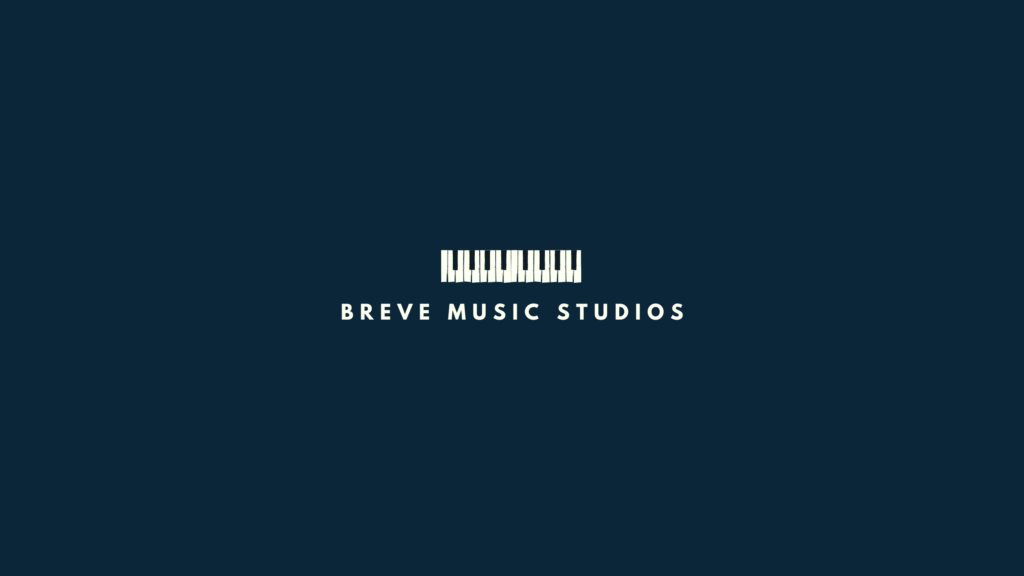Table of Contents
Introduction
As we witness the transformation of our modern digital age, no platform has had a quite profound impact on the dynamics of the music industry like Spotify. With millions of active users worldwide, Spotify has not only revolutionized our music listening habits but also how musicians distribute their work. This report delves into an in-depth exploration of Spotify’s active audience, offering a comprehensive understanding of its growth pattern, consumption habits, engagement strategies, the impact of its marketing strategies, and future projections.
The Growth of Spotify’s Active Audience
Spotify’s Rapid Rise: Metrics and Milestones
Spotify took the audio streaming services sector by storm after its launch in 2008. By 2019, Spotify boasted more than 248 million monthly active users (MAUs), a significant rise from 207 million in 2018. Fast forward to 2021, this number ballooned to over 381 million. This rapid growth in Spotify’s active audience is indicative of its widespread popularity across digital platforms and its increasing uptake globally.
Regional Breakdown of Users
Spotify’s active audience is spread across over 170 markets worldwide. North America and Europe have traditionally been their primary markets, with Europe accounting for nearly 35% of Spotify’s total MAUs in the first quarter of 2021. Meanwhile, North America accounted for approximately 29%, a minor dip from previous periods. Interestingly, the growth of users in Latin America and the rest of the world has been noteworthy. Latin America represented 22% of Spotify’s MAUs in the same period, while the rest of the world represented 14%, proving that Spotify’s appeal is truly global.
A Demographic Snapshot
Spotify’s active user base is predominantly made up of younger demographics. Roughly 56% of Spotify users are below the ages of 34. This has primarily roots in trends in digital consumption, where younger users are more likely to consume content on digital platforms. A study also claimed that Spotify users are more likely to have bachelor’s degrees, and be from higher income households. This suggests that Spotify is particularly popular among a more educated and affluent demographic. However, as the platform broadens its offerings beyond just music, like podcasts, we may see a diversification of its user demographics.

Factors Behind Spotify’s Growing Audience
Spotify’s active user base growth is attributable to its strategic decision to diversify its content offerings, and invest aggressively in podcasts. By doing so, Spotify tapped into the burgeoning podcast industry and managed to attract millions of new users. There’s a rise in the demand for personalized content, and the ‘Discover’ feature, which suggests songs or podcasts based on previous choices, successfully meets this demand. Additionally, their flexible subscription models, including an ad-supported free tier, and family or student discounts, make their service more accessible to a broader audience.
Future Prospects
Spotify’s exponential increase in audience number represents a bright future for the platform. There are influential factors involved, such as the execution of international expansion strategies and the evolution of online audio content consumption. It’s predictable that many consumers will shift from the traditional mode of enjoying music towards digital platforms. It inevitably amplifies Spotify’s eminence as a front-runner in the music streaming business. In addition, credible predictions have projected that podcasts will assume an important part in attracting new users, implying Spotify’s active audience portrays a bright future.
Consumer Behaviors within Spotify’s Active Audience
Comprehending Spotify’s Active Audience
Spotify leads the wave of music streaming platforms, boasting a variable, vibrant audience. The activity and behavior patterns of these users offer profound understanding about platform utilization. Factors including the regularity of usage, peak utilization hours, listening preferences, and engagement with Spotify’s manifold features provide insightful data about the users.
User Activity and Times of Usage
User activity on Spotify fluctuates throughout the week and even within the day. The platform typically sees a surge of activity during the weekdays, with users streaming music while working, studying, or engaging in various other activities. During the weekend, user activity usually dips slightly due to users being engaged in different activities that don’t need a constant soundtrack.
In terms of daily usage, the platform experiences a boost in the morning as users start their day with their favorite tunes. There is another peak in the evening as users unwind after work. Notably, these patterns could vary based on the user’s demographic and lifestyle.
Listening Habits
When it comes to listening habits, the active audience of Spotify exhibits diverse preferences and habits. Some users prefer to listen to playlists curated by Spotify to discover new artists and songs, while others are loyal followers of their favorite bands and artists.
The “Discover Weekly” feature on Spotify, which offers personalized music recommendations to users, has also profoundly influenced the listening habits of users, steering them towards songs and artists they may not have otherwise discovered. Users also interact with the “Daily Mix” playlists, which offer a combination of users’ favorite songs and new recommendations.
Interactivity with Features
Interactivity with the platform’s features presents another facet of user behavior. Features like “Collaborative Playlists”, which allows users to create playlists with friends, are popular, fostering interaction and connection between users. The “Share” function, which helps users share their favorite songs and playlists on social media platforms, also receives notable usage.
Moreover, the usage of Spotify’s podcast feature has gained substantial traction over recent years, with users tuning into a variety of topics ranging from entertainment, education, to well-being. The engagement with this feature indicates an evolving inclination towards diverse content consumption.
Unraveling the Impact of Data Analysis on User Understanding
The diversity in user behaviors within Spotify’s vigorous audience underscores the necessity of comprehensive data scrutiny. It is instrumental in gaining insights into user interaction modalities with the platform. Such understanding forms the bedrock of major decisions encompassing feature enhancement, personalized recommendations algorithms, and marketing paradigms, which ultimately mold the overall user experience on Spotify.
Identifying and comprehending these patterns make it possible for Spotify to deliver a custom-made experience to every user, thereby stimulating user engagement and nurturing a faithful user community.
Spotify Active Audience Engagement
Probing into Engagement Patterns of Spotify’s Animated Audience
Spotify, standing at the forefront of music streaming services, proudly houses an active user community of over 345 million. At the heart of Spotify’s triumph lies its commitment to accentuating active user engagement, achieved through a mix of cutting-edge features like tailored playlists, the unique Discover tab, and a plethora of social interaction amenities.
Curated Playlists and Personalized Recommendations
Spotify’s use of curated playlists is one example of effective active audience engagement. Spotify offers a myriad of playlists that cater to a wide range of tastes, moods, and activities. By doing so, they turn the vast world of music into an organized, personalized experience for each user. For instance, through features such as Discover Weekly and Daily Mix, Spotify uses complex algorithms to predict and suggest songs that a user may enjoy based on their listening history. This level of curation satisfies the listener’s individuality and keeps them engaged with the platform.
Exploration via the Discover Feature
The Discover feature is another tool used by Spotify to encourage user engagement. Here, listeners can explore music and podcasts they might not typically engage with, venturing outside of their usual genres or artists. This feature uses an advanced algorithm that takes into account a user’s past music and podcast listening behavior and combines it with data from other users with similar tastes to recommend new content. This encourages the discovery of new music and podcasts, promoting wider user engagement.
Social Features for Shared Listening Experiences
Finally, Spotify’s social features are integral to maintaining its active audience. Among these include collaborative playlists, allowing users to create shared lists that can be edited by any users invited by the creator. This facilitates a more interactive, communal approach to music discovery.
In addition, Spotify’s integration with social media platforms such as Facebook and Instagram enhances audience engagement. For example, users can directly share their favorite songs or playlists to their Instagram Stories. The ‘Friends Activity’ feature also allows users to see what their friends are currently listening to on Spotify, sparking interactions, and building a sense of community while retaining user engagement.
Wrapping Up
Overall, Spotify mainly relies upon effective curation, innovative exploration features, and powerful social sharing capabilities to actively engage its audience. These strategies allow users to discover and share music in a personalized way, thereby not only sustaining their interest but also continually expanding Spotify’s user base.
The Impact of Spotify’s Marketing Strategies on its Active Audience
Understanding Spotify’s Consumer-Oriented Marketing Strategies
At the core of Spotify’s marketing efforts is a deep comprehension of its customers’ needs and wants. By harnessing the power of advanced analytics and big data, they tailor their service to deliver an unparalleled user experience. This practice has been significantly successful, drawing in millions of daily active users.
Using Data to Drive Personalization
To understand and serve its active audience better, Spotify collects vast amounts of information. This data, which includes users’ listening habits, playlists, and interaction with various features, feeds a powerful machine learning algorithm that recommends music catered to individual tastes. This level of personalization has allowed Spotify to cultivate loyalty within its active audience.
Marketing Campaigns and User Engagement
Spotify’s marketing campaigns are renowned for their quirky creativity, often leveraging user data in innovative ways. The year-end “Wrapped” campaign, a personalized event that showcases users’ top songs and artists, successfully fuels user engagement and makes it a lauded affair on social media. By incorporating user-generated content in its campaigns, Spotify has been able to foster a sense of community among its active audience.
Spotify Exclusive Deals and Partnerships
To differentiate itself in a competitive market, Spotify has pursued exclusive partnerships and deals with renowned artists. These exclusive offers are a powerful lure, promising users access to content they cannot get elsewhere. This strategy has attracted new users while keeping the existing user base engaged and intrigued.
Spotify’s Impact on User Growth and Retention
Spotify’s marketing arsenal of personalization, big data, innovative campaigns, and strategic partnerships has significantly contributed to its active audience growth and retention. The unique algorithms they use constantly mean users discover new music related to their tastes, increasing user satisfaction and encouraging them to remain within the fold.
Additionally, Spotify’s free model provides an opportunity for users to test the service before deciding to pay for it. Once users are accustomed to the level of personalization and array of songs on Spotify, they are more likely to turn into paying customers, boosting both user growth and retention.
Conclusion
Spotify has secured its position as a forerunner in the music streaming industry through its ingenious marketing strategies. By prioritizing its active audience and incessantly innovating, Spotify has managed to steadily expand and maintain its user base, achieving a remarkable level of success that its competitors can only dream of.
Future Projections for Spotify’s Active Audience
Examining the Current State of Spotify’s Active Audience
Accomplishing a groundbreaking milestone, Spotify had a staggering 381 million active users in the third quarter of 2021, out of which 172 million were paying subscribers. The primary consumer groups are 18-24 and 25-34-year-olds, both of which exhibit substantial engagement. Spotify’s influence isn’t just limited to select areas. It is particularly favored in North America, Europe, and Latin America showcasing its global diversity in listenership.
The Influence of New Features
Spotify’s surge in user engagement can be attributed to a consistent rollout of new features and personalization tools. For instance, the introduction of podcasts significantly increased the time spent on the app, indicating users’ evolving preferences for multimedia content. Similarly, collaborative playlists, personalized song recommendations, and downloadable music have directly contributed to the growth of the user base.
The social media integrations, such as shareable song cards on Instagram and Facebook stories, have also capitalized on the interconnectedness of social platforms, thus encouraging more users to engage with Spotify.
Projections for Spotify’s Active Audience
Assumed relational growth between the introduction of innovative features and the increase in active users, it is anticipated that Spotify will continue to see steady growth in their user base. If the current pattern persists, projections for the end of 2022 show the possibility of reaching an active user base of over 400 million.
Another factor contributing to projections is the expansion into more markets. With the recent launch in countries like South Korea, a significant music market, Spotify diversifies and grows its audience.
The Impact of Changes in Spotify’s Strategy
Spotify recently revealed its interest in live audio rooms, mirroring the features of clubhouse – a popular voice-based social media app. As this feature rolls out, it’s likely to appeal to audiences who prefer real-time interactions and discussions, leading to a further increase in active users.
Spotify has also been increasingly investing in its podcasting content, securing exclusive deals with popular podcasters, and acquiring podcasting companies. This strategy is anticipated to attract more podcast listeners to the platform and increase engagement.
The potential impact of upcoming features
Spotify is said to be testing a new feature called “Discover”, intending to help users find new music based on their listening history. The implementation could significantly enhance user engagement, encouraging active listeners to explore and stay longer on the platform.
Conclusion
Projections for Spotify’s active audience are positive, with the possibility of substantial growth in the near future. Whether it’s the continuous rolling out of new features or changes in the platform’s strategy, Spotify is well-poised for continued growth in its active user base.
Given the evidence provided and the emerging trends observed, Spotify appears set to continue its dominance in the digital music streaming industry. The platform’s user-focused features, aggressive marketing strategies, and relentless pursuit for expansion play a significant role in its steadily surging active audience. As we navigate the future of digital entertainment, it becomes imperative to understand the finely tuned engine behind Spotify’s success and its effervescent audience. As they quite aptly put it, “Music for everyone”. This story of growth, engagement, and dynamism is just the beginning, with the road ahead promising to be melodious, intense, and nothing short of exciting.
Additional Reading
Take some time to check out our other articles. Learn how to make money on YouTube as a musician. You can also learn audio engineering 101.
Check out this article comparing compressors and limiters. In this article, you can learn 7 essential music production tools under $100. Learn the difference between SoundExchange vs SongTrust in this article.
Breve Music Studios publishes music to Spotify, YouTube Music, Amazon Music and more. Follow our pages on Facebook, Instagram, Twitter, TikTok, and YouTube.
Listen to our ensembles: Breve Orchestra, Breve Music Ensemble, Breve Low Brass Ensemble, Breve Woodwind Ensemble, and Jermaine Harris on Spotify.

